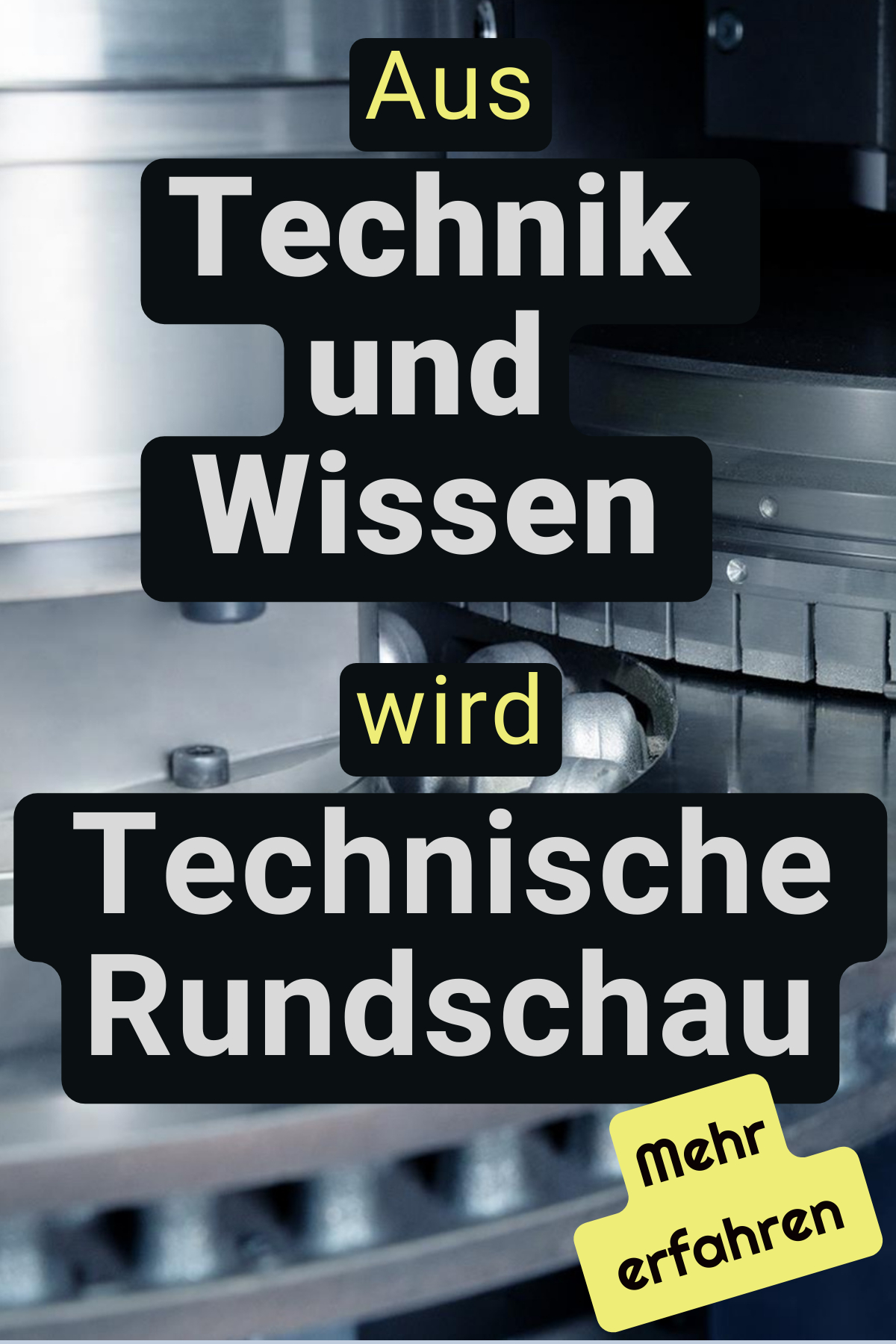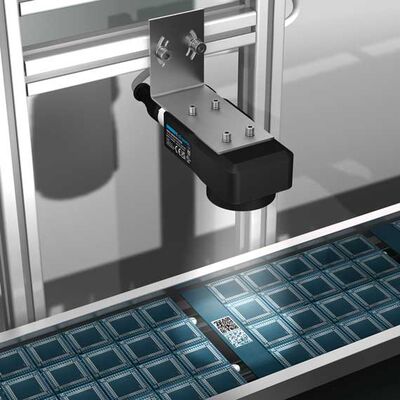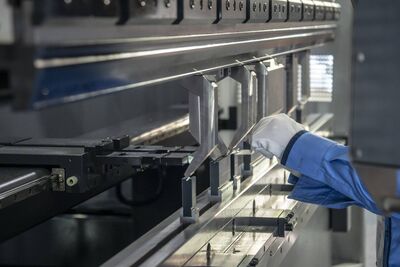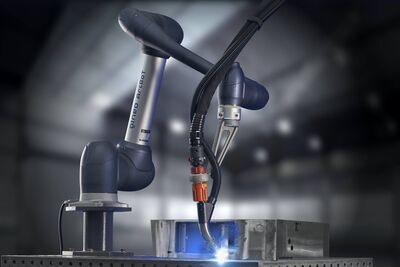
Those who continue to rely on pneumatics, says Maurizio Tarozzi, miss a big opportunity to save energy. In this interview, B&R's Chief Product Officer also talks about the need for orchestrated software and the requirements of modular manufacturing systems.
When it comes to reducing the energy consumption of machinery and plants, what does automation technology have to offer?
I would say there is potential here on two levels: the automation components and the products being produced. You can address the carbon footprint of manufacturing at both levels. If your goal is to produce an end product in the most sustainable way possible, you need to start with an understanding of the entire process. That's the only way you can properly size and dimension all the hardware. A great example of this is one of our customers who makes reusable plastic bottles. By combining their process know-how with our precise control, they were able to reduce the wall thickness of the bottles and save a considerable amount of raw materials.
When you look at what's happening around the world, automation technology enables energy savings at another level as well. More and more manufacturers are moving production closer to the end market to increase resilience and reduce shipping costs. This also comes with big potential for energy savings, and automation is essential to making it possible.
Concepts for reducing the energy consumption of machinery and plants
Is B&R working on specific concepts to reduce energy consumption of machinery and plants?
Yes, we are. One of the biggest sources of energy consumption in a machine are pneumatic actuators. They are a bottleneck that prevents faster cycle times and more efficient machines. That's why our vision is the full electrification of manufacturing processes. We're working on solutions that help our customers replace their pneumatic systems. In our view, those who continue to rely on pneumatics are missing a big opportunity to save energy.
How are the recent developments in energy prices reflected on the demand side for B&R?
Our customers are definitely looking more closely at the total cost of operating their machines. They're looking to automation to help their customers save energy and produce in a more sustainable way. What that means for us is continuously improving our products and getting the necessary certifications. With the China Energy Label, we're already at the forefront of energy efficiency in motion control, and we'll see more certifications coming in the near future.
Technology and processes are aging
As automation technology ages, how can I tell if the products I'm using are no longer the most energy efficient?
That's something that can easily be calculated, and it's definitely a worthwhile exercise. If you compare the efficiency of today's electric motors against ones that were built 20 years ago, you see quickly how much energy is lost by using old technology. But it's not just the technology that grows outdated: The same holds true for entire manufacturing processes. There can be a lot of the potential there, particularly in terms of waste reduction. Because, of course, anything you produce that doesn't meet quality requirements ends up as scrap. You're consuming energy to make a product that will never be sold. So, it's not enough to look at individual technology components. To really optimize your energy consumption, you need to step back and take a critical look at your processes.
Let's talk a little more about waste reduction: What can be done to make a lasting difference?
The best way to do this is by making your processes adaptive. I can give you a good example: If you have a rigid mechanical system, a single defect means you have to scrap a whole batch of 50, 100 or more products. But that's not the case if, instead, you're moving each product through the process individually – like with our mechatronic transport systems Acopostrak, Supertrak oder Acopos 6D. If you have a quality issue with one item, you just divert that shuttle out of the process and the rest of the batch continues unaffected. That saves a huge amount of wasted materials and energy.
One of your customers made a new die cutting machine that is three to eight times more energy efficient than its competition. How does B&R help its customers achieve such leaps in innovation?
What sets us apart on the market is the way we bring our expertise into a collaborative development process. When a customer comes to us looking to design a machine from the ground up, we begin a process of co-creation. We look at the potential of the technology and the requirements of the customer and we create a new machine together. This often involves testing and proof-of-concept at one of our labs around the world, including the use of simulation on a digital twin. That lets you check the feasibility and efficiency of your process before you ever start building the actual machine.
About Maurizio Tarozzi
Maurzio Tarozzi joined B&R in 2001 as an application engineer, gaining extensive experience developing software for packaging and pharmaceutical machinery. As Chief Product Officer, he now sets the strategic direction for the B&R portfolio. His expertise has made him a sought-after speaker on future automation trends. As an avid promoter of international standards, he is active in the Italian Packaging Machine Builder Association (UCIMA) and in the OMAC Packaging Workgroup (OPW).
Automation Lab connects academic research, product development and customer applications
One of those labs is the Automation Lab in Frauenfeld. Tell us about what happens there.
Frauenfeld is an important hub for our global research and development. At the Automation Lab, our specialists work closely together with our customers on their latest projects, doing certification, testing and co-creation. It's also where we collaborate with the ETH university in Zürich and build bridges between academic research, product development and our customers' applications. That's the best way to transform cutting edge technology into real-world benefits.
To what degree can the energy efficiency of machinery and plants be improved by optimizing the interaction between different automation components?
That's a question we think about a lot, because the way we answer it will be decisive for the future of manufacturing. Today, manufacturing is often still seen as a bunch of different machines, separate pieces of equipment and stations that somehow have to interact with each other. Each machine, each piece of equipment, each station is based on different hardware, software and communication technologies. And it can be a lot of work to get those things to work together. Depending on the complexity of the project, it can take years.
The next level – in terms of energy efficiency, but also productivity and flexibility – is to have perfectly orchestrated software that handles all the different processes. And that software should be based on standard hardware with open interfaces. That means you need open standards for communication, programming and simulation. That will make it possible to seamlessly track the carbon footprint and energy consumption of every product throughout the manufacturing process.
At B&R, we are embracing standards like OPC UA and OPC UA FX for open connectivity from the factory floor to the cloud. Together with our expertise and the digital twin, we will also provide orchestration software based on open standards that will help to create more efficiency in terms of energy, but also in terms of processes and productivity.
What challenges stand in the way of this approach?
One of the biggest challenges is to get open standards in place for programming, communication, connectivity and cybersecurity. There are a lot of activities going on here and committees where B&R is actively involved.
Another challenge is to bring the latest IT standards into the OT world. And again, we're talking about cybersecurity. Because all of these things rely on connectivity to cloud systems or servers in general that don't run directly on our technology. So, it's important that you do this according to international standards and according to the strictest rules of cybersecurity.
Challenge of modern production: Stabile parameters
Production of smaller batch sizes requires modular machines. That makes it difficult to operate in the ideal load range. What could an approach look like that nevertheless allows machines to be (energy-)efficient?
Part of the answer is to have intelligent motion control software that can adapt control parameters on the fly depending on the load. That improves energy efficiency, but it also improves quality. That's because when you want to run a wide variety of products, the challenge is always to have parameters that are stable. And usually, if you don't proactively adjust parameters, you don't get the quality you want and you have a lot of waste.
When it comes to producing small batches, energy efficiency, quality and productivity all depend on how well you can adapt to the needs of each batch. And that's what comes when you combine robotics, machine vision and simulation around a mechatronic system with individual control over each product. You save energy on startup between batches because you can change over on the fly. You can operate on a much smaller floorspace and not waste energy on empty conveying and handling. And you can reduce waste by identifying and removing defects early in the process.
What's your advice to machine builders and plant operators who are just now or once again focusing on energy efficiency?
I would encourage them to speak with experts to better understand the challenges involved. There are international associations dedicated to reducing energy consumption. They know the standards and regulations and what technology is available.
But probably one of the easiest and most effective ways is to talk to their suppliers. Suppliers are always at the forefront of their technology and how it can be applied to their customers' needs. At B&R we have that expertise, and we love it when machine builders come to us with a challenge.
Is there anything else you'd like to add on the topic?
I think we are at the beginning of a revolution. The industry has been talking about energy efficiency for a number of years, but so far it hasn't gotten the full attention it deserves. Now, sustainability is becoming more and more central to every company's strategy. People are finally becoming more aware of the challenges we face with the environment, and the pressure is there at every level of the value chain. We are at the beginning of some very exciting things and supporting the transition to a sustainable future is at the core of our vision.
Veröffentlicht am:






